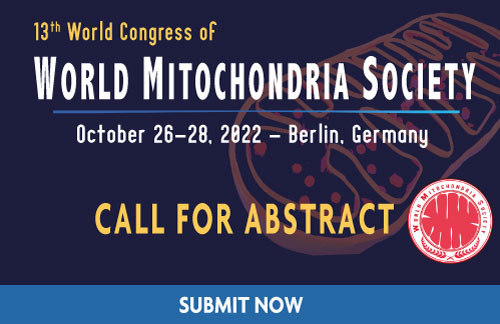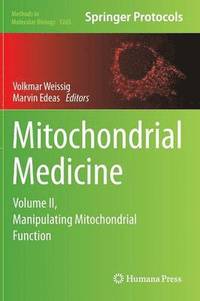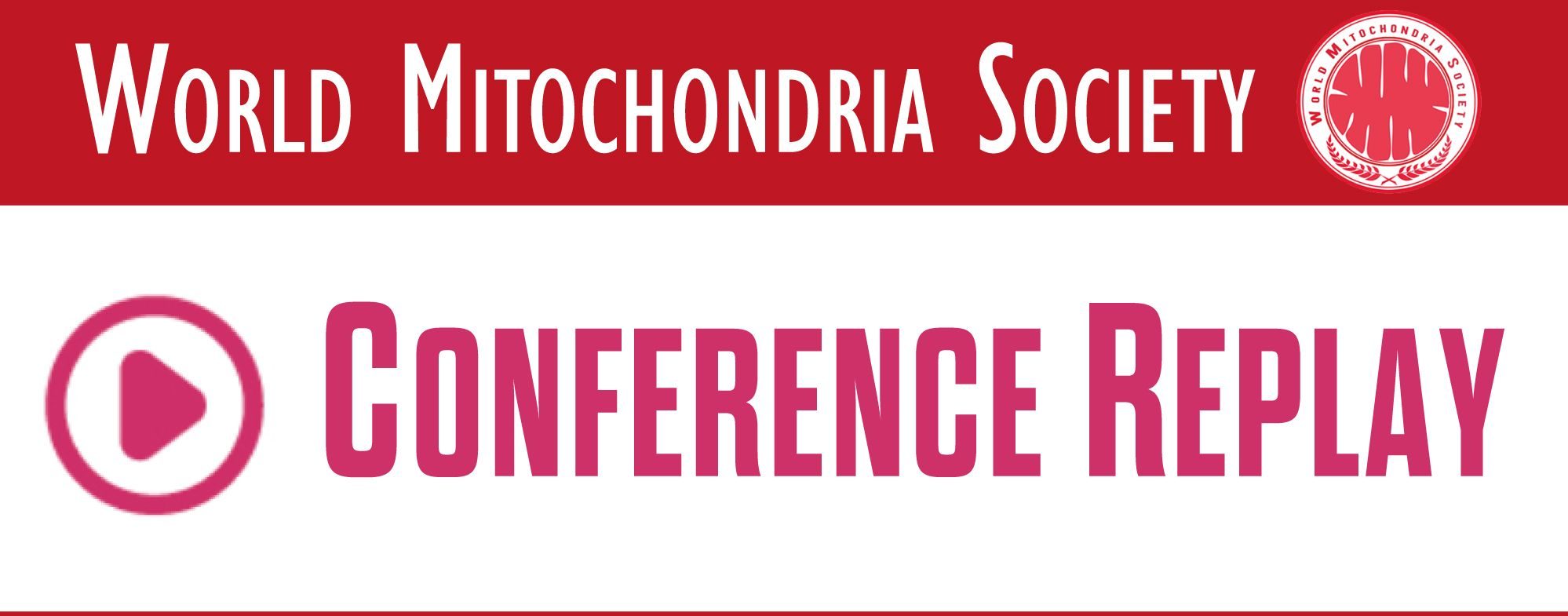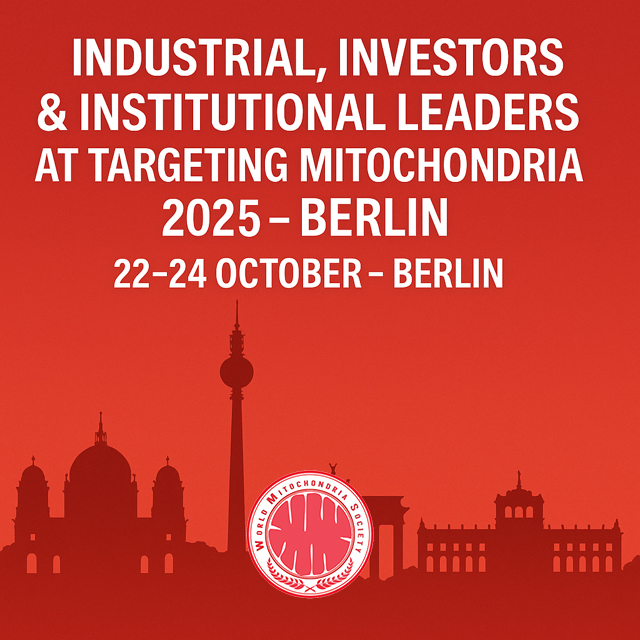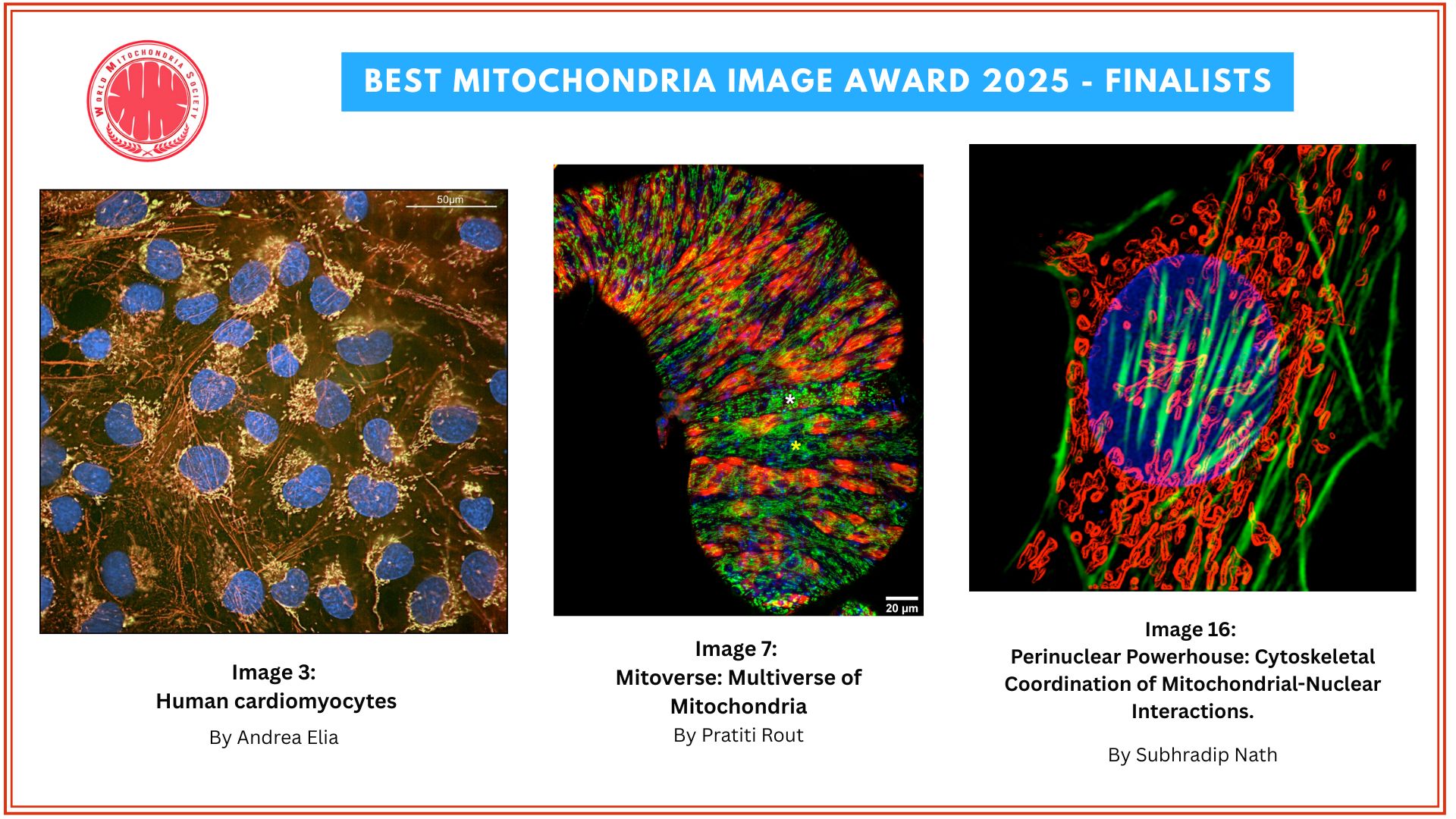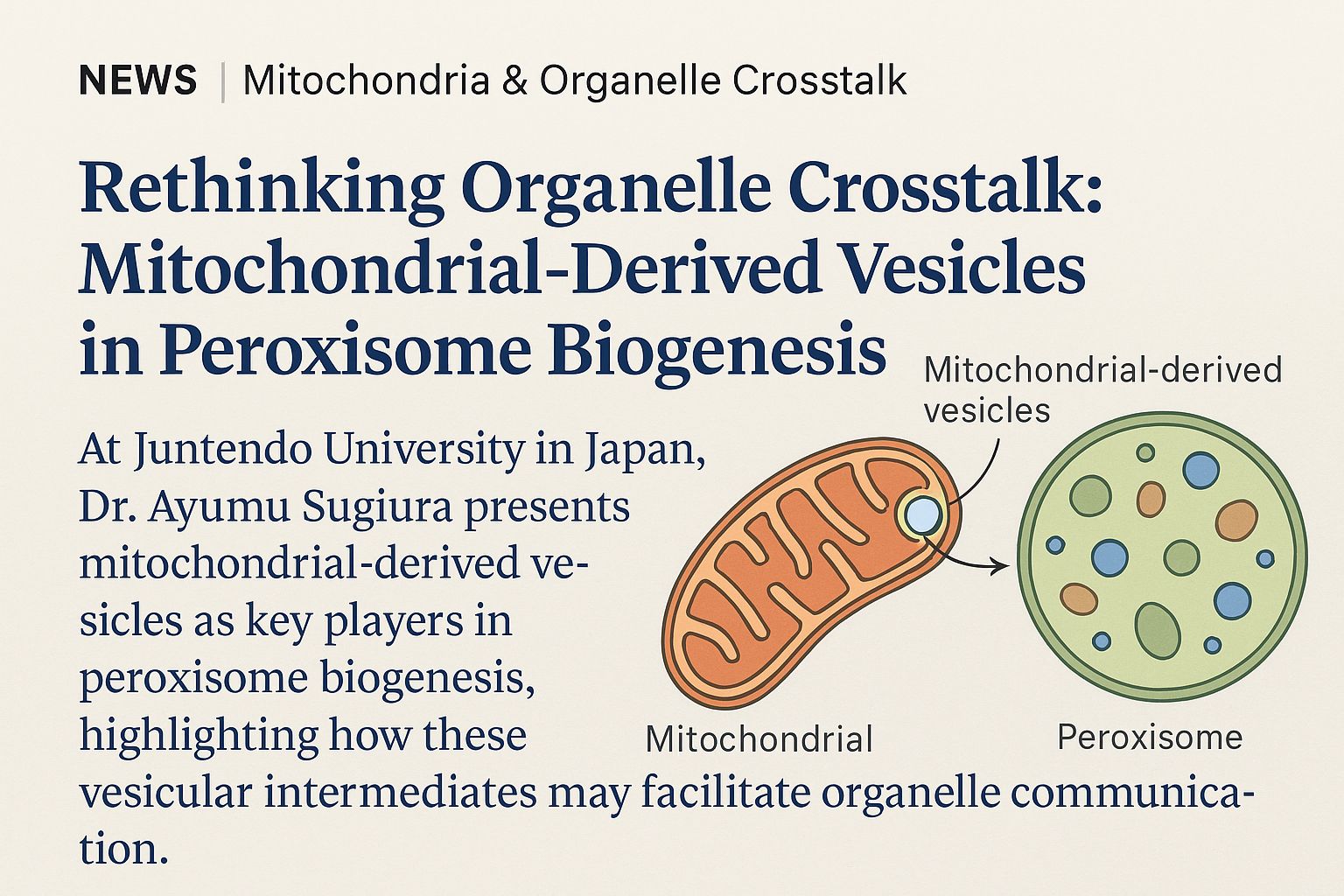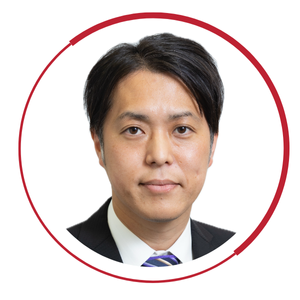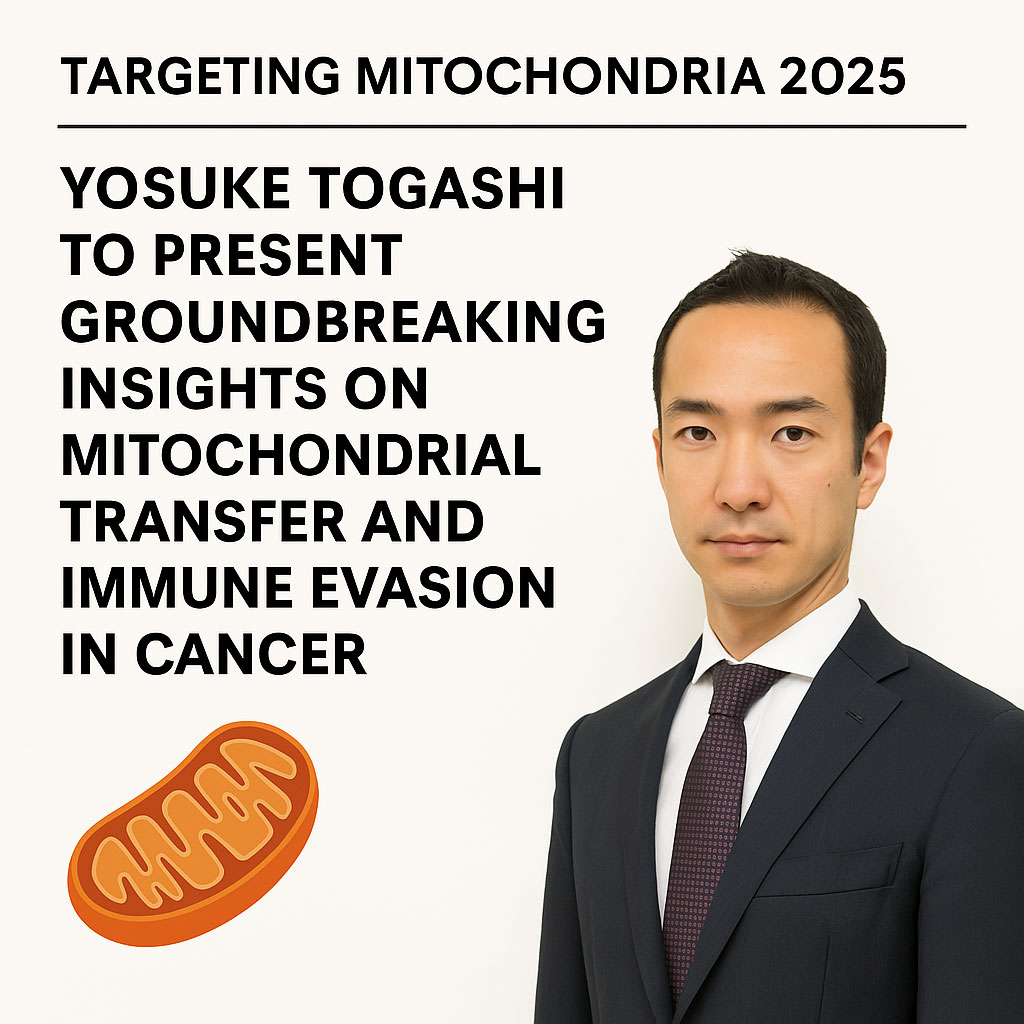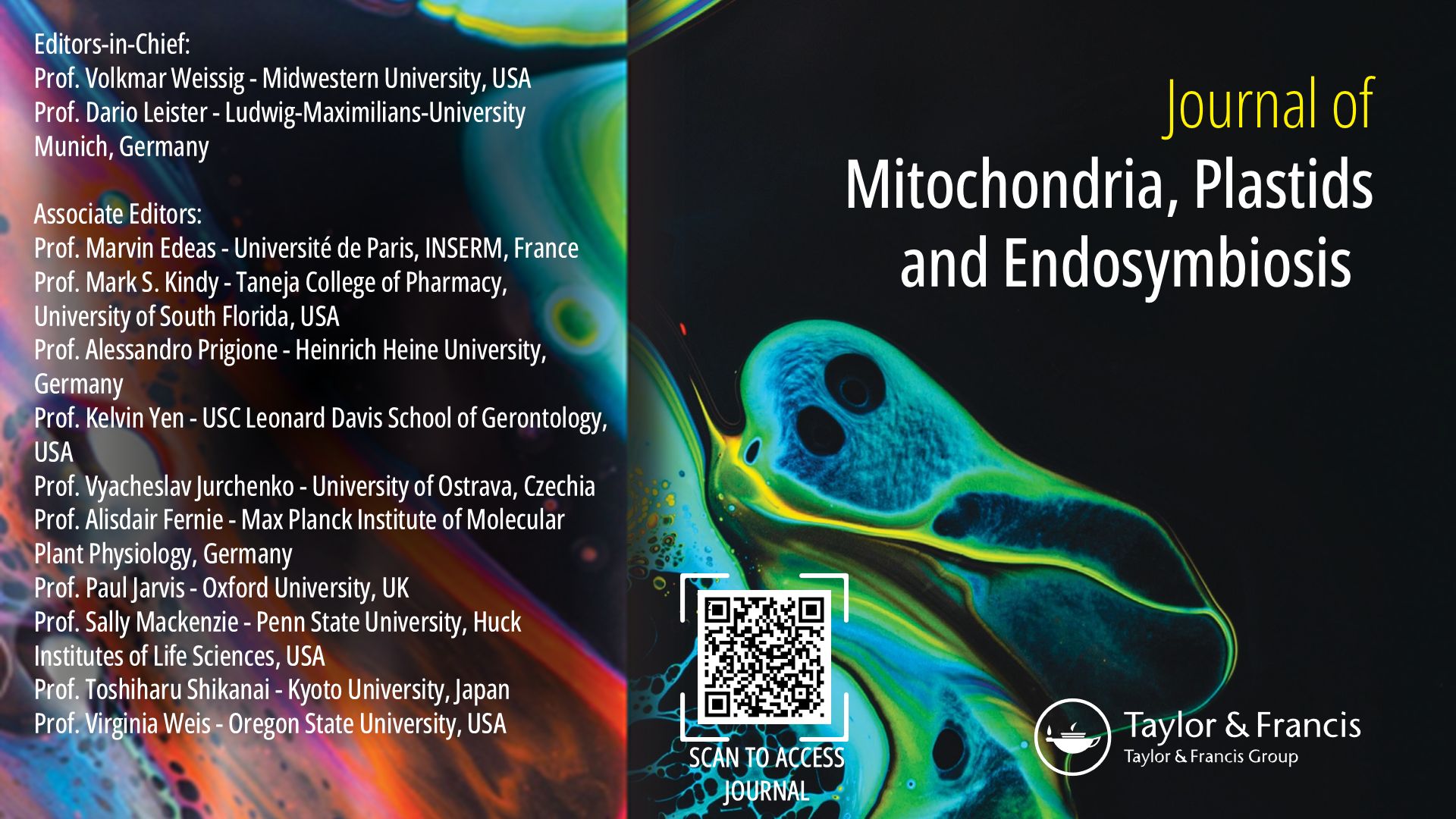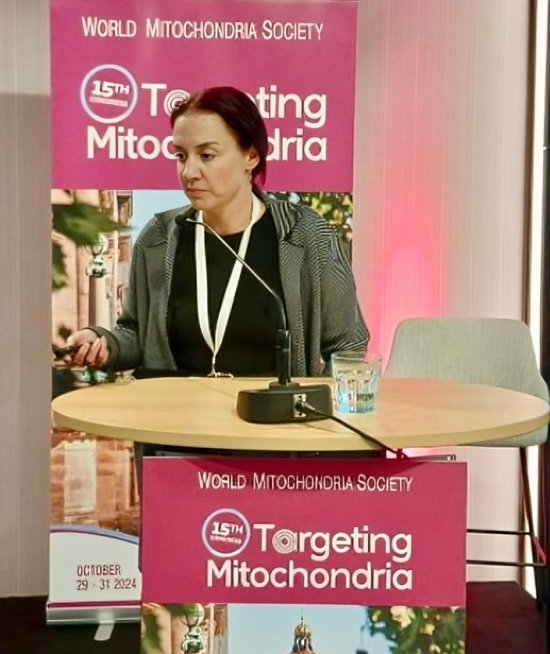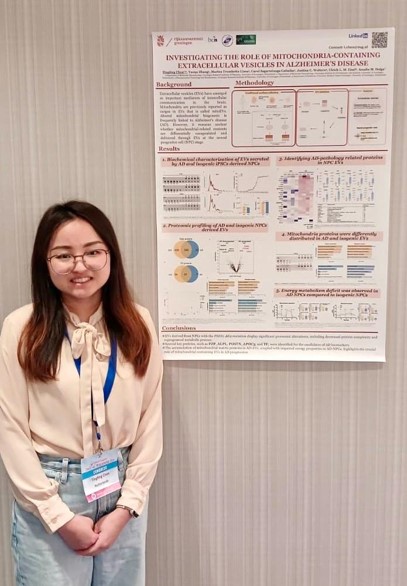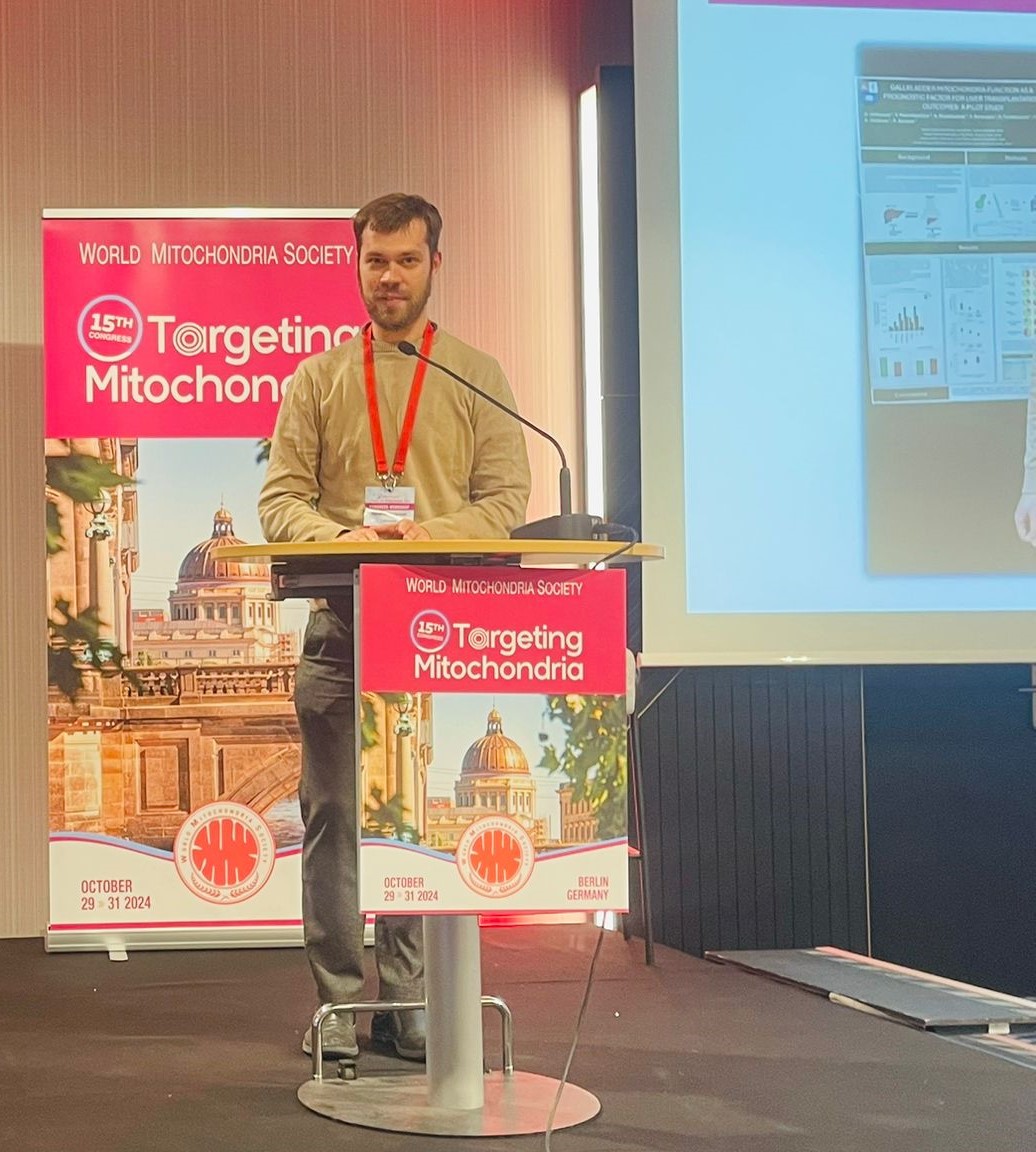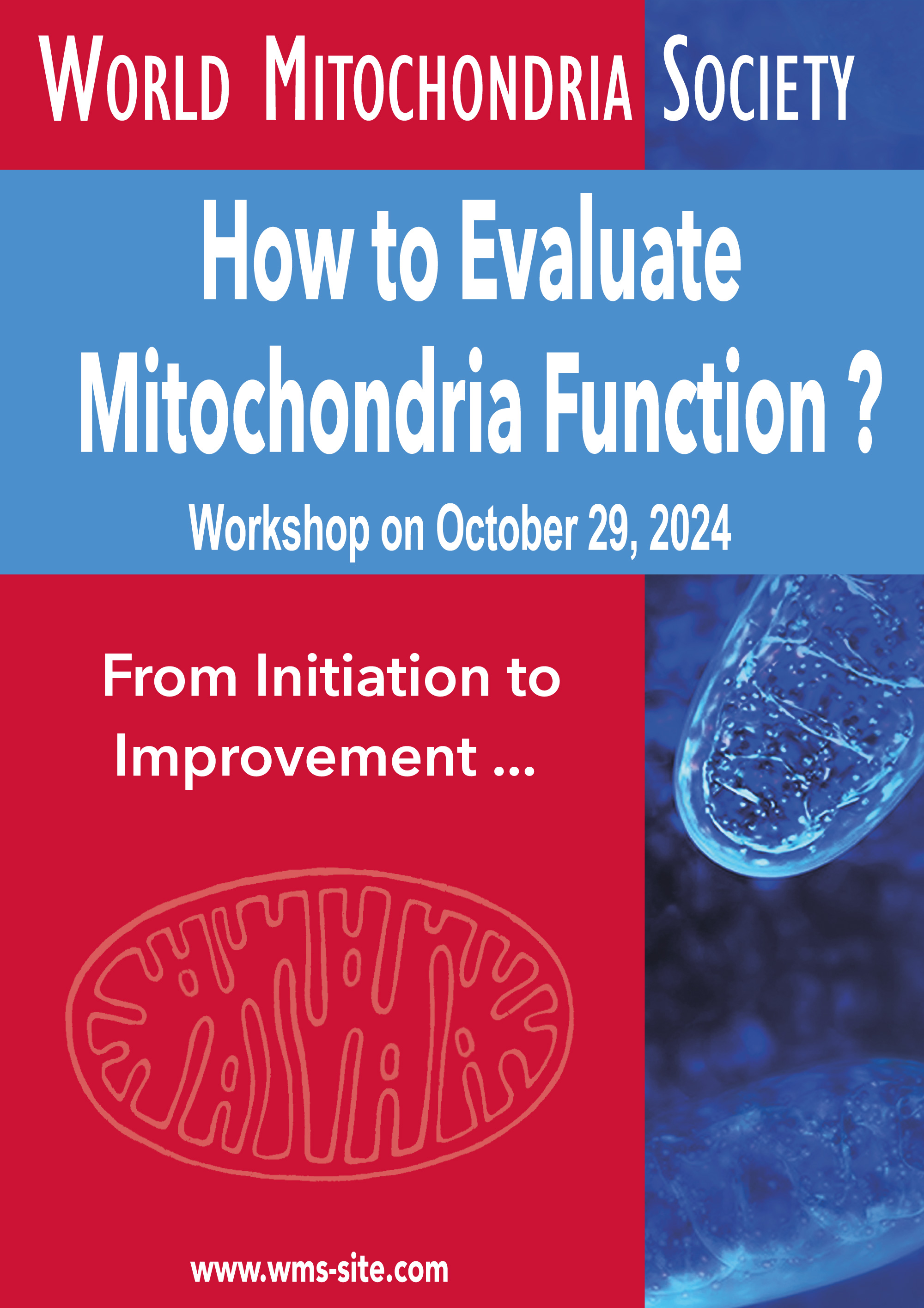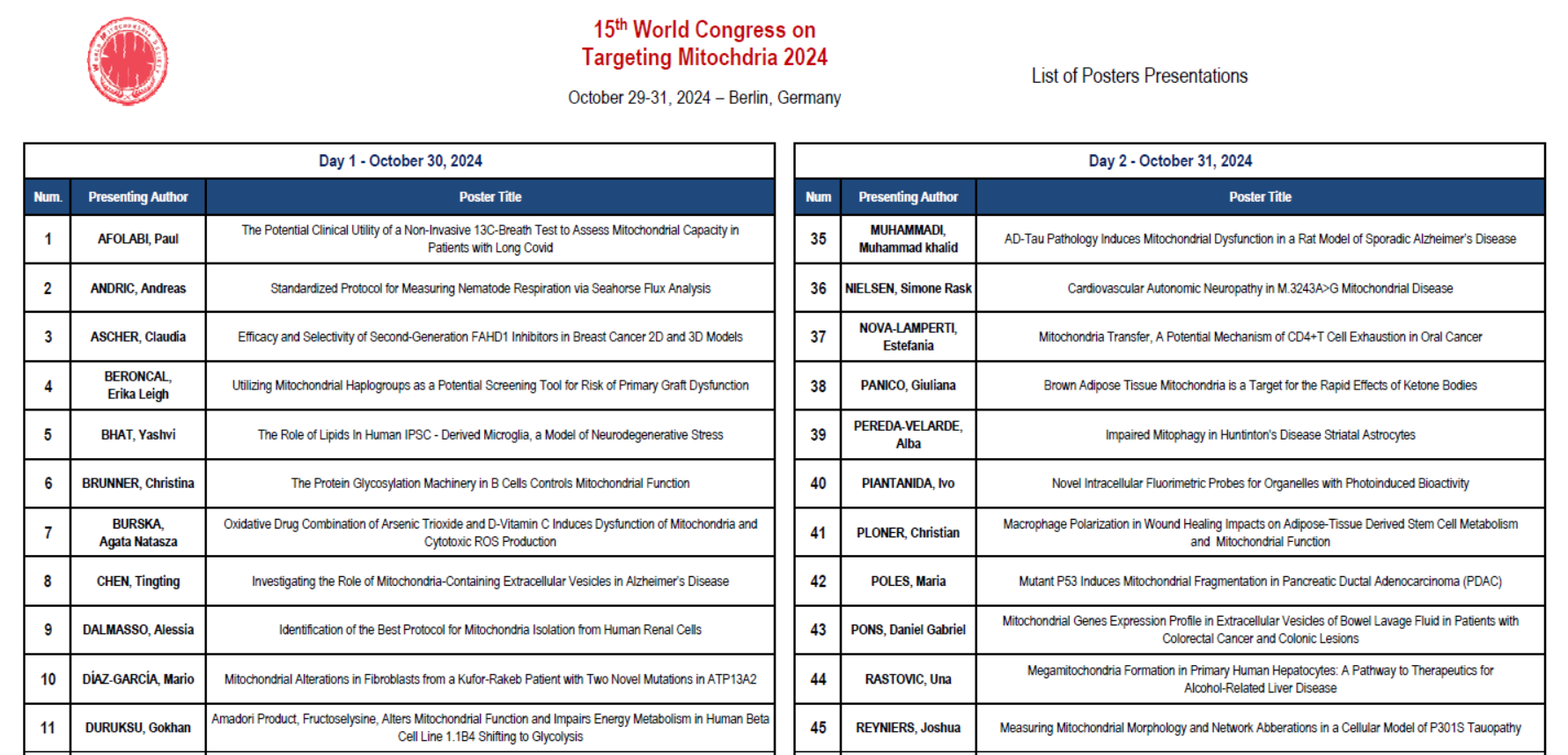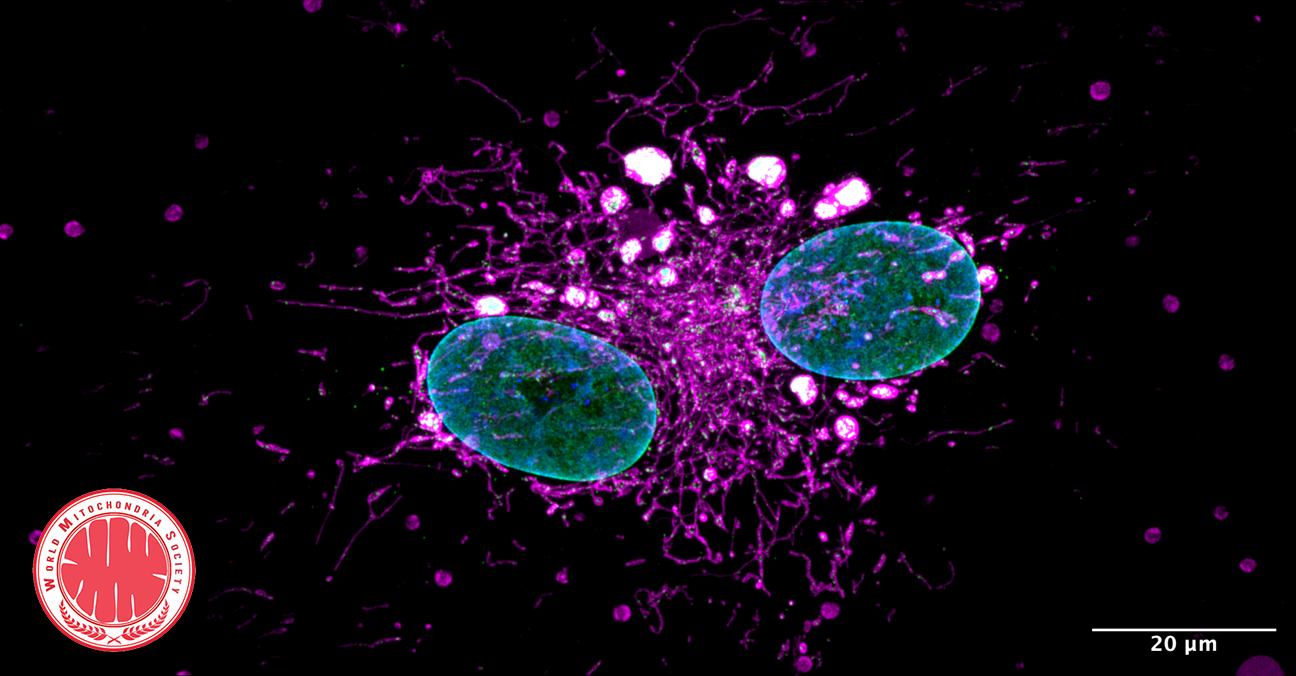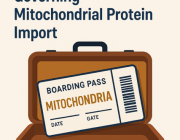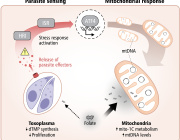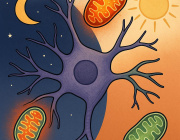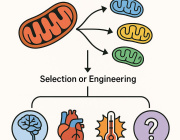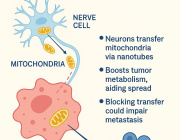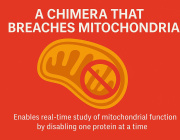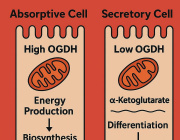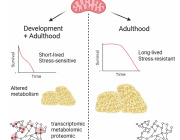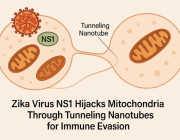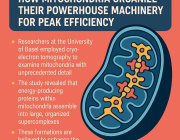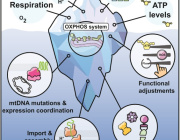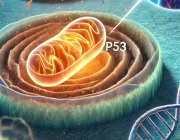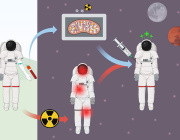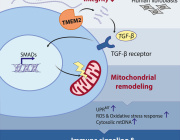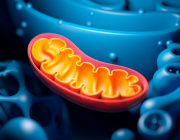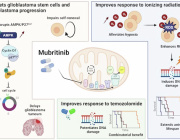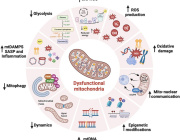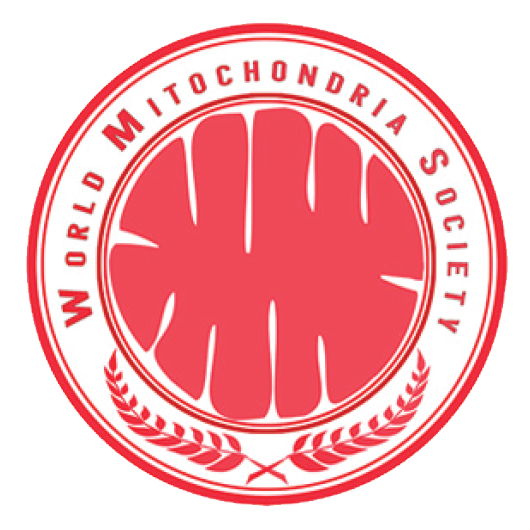Call for Abstracts & Innovations
|
This call is addressed to all the scientists, academics, and industrials out there! The Scientific Committee of the World Mitochondria Society & Targeting Mitochondria Congress are pleased to invite you to present your most recent findings in the mitochondria field- during the 13th World Mitochondria Society Annual Meeting on October 26-28, 2022 in Berlin, Germany. |
Important dates for this international meeting:
- Deadline for Short Oral Submission: October 9, 2022
- Deadline for Poster Submission: October 15, 2022
To know more about the abstracts submission process, please click here.
Be careful not to miss the deadlines!
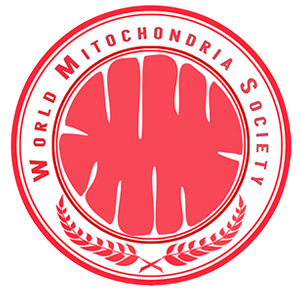 Targeting Mitochondria 2022 Congress
Targeting Mitochondria 2022 Congress
October 26-28, 2022 - Berlin, Germany
www.targeting-mitochondria.com
The Multiple Facets of the Mitochondria Shaping Protein Opa1 in Adipocytes: From Epigenetic to Tissue Plasticity
 Dr. Camilla Bean, from the University of Padova, Italy will join us this year to present her most recent findings on "The Multiple Facets of the Mitochondria Shaping Protein Opa1 in Adipocytes: From Epigenetic to Tissue Plasticity".
Dr. Camilla Bean, from the University of Padova, Italy will join us this year to present her most recent findings on "The Multiple Facets of the Mitochondria Shaping Protein Opa1 in Adipocytes: From Epigenetic to Tissue Plasticity".
She will introduce us to her studies that substantiate the importance of mitochondrial morphology in adipose tissue biology. By a multiomics approach in different genetic models she shows that adipocyte Opa1 regulates adipose tissue expandability and promotes WAT to BAT remodelling via an unexpected axis involving urea cycle stimulation, fumarate accumulation and the Jumanji family histone demethylase Kdm3a.
Targeting Mitochondria 2022 Congress
October 26-28, 2022 - Berlin, Germany
wms-site.com
Mitochondria in Retinal Photoreceptors: More than Meets the Eye
 Dr. John Ball, from National Institutes of Health, USA, will join us this year to present his most recent findings on the "Mitochondria in Retinal Photoreceptors: More than Meets the Eye".
Dr. John Ball, from National Institutes of Health, USA, will join us this year to present his most recent findings on the "Mitochondria in Retinal Photoreceptors: More than Meets the Eye".
In the mammalian retina, each cone photoreceptor contains a multitude of mitochondria that appose its outer segment, where photons are detected and translated into bioelectrical signals that lead to perception of light.
Dr. Ball shows that—in addition to their customary energetic role—this mitochondrial agglomeration functions as a microlens that enhances the availability of light at the outer segment. This optical role has implications for both vision and for the diagnosis of retinal disease.
Join us in Targeting Mitochondria 2022 to learn about the many major roles of mitochondria and benefit from the experience of professional researchers like Dr. Ball. Book your spot.
Targeting Mitochondria 2022 Congress
October 26-28, 2022 - Berlin, Germany
wms-site.com
Mitochondrial targeting in aging and injury

Dr. Raghavan Pillai Raju, from the Medical College of Georgia, USA will join us this year to present his most recent findings on "Mitochondrial targeting in aging and injury".
Dr. Raju's laboratory is interested in understanding the alterations in mitochondrial function with aging and injury and developing strategies that target mitochondria to restore metabolic coordinates following acute injury. He will also discuss the resilience of young animals to injury and the rejuvenating effect of plasma-derived extracellular vesicles from young animals in potentiating mitochondrial function and improving survival following hemorrhagic shock injury in aged animals.
Targeting Mitochondria 2022 Congress
October 26-28, 2022 - Berlin, Germany
www.targeting-mitochondria.com
Mitochondrial Transfer via MitoPunch

Dr. Michael Teitell, from the University of California, USA will join us this year to present his most recent findings on "Mitochondrial Transfer via MitoPunch".
He will be discussing the use of MitoPunch to deliver mitochondria containing mitochondrial DNA (mtDNA) into cells lacking mtDNA.
Targeting Mitochondria 2022 Congress
October 26-28, 2022 - Berlin, Germany
www.targeting-mitochondria.com
2-Deoxy-D-glucose couples mitochondrial DNA replication with mitochondrial fitness
 Dr. Ian J. Holt, from the Biodonostia Health Research Institute, Spain will join us this year to present his most recent findings on "2-Deoxy-D-glucose couples mitochondrial DNA replication with mitochondrial fitness".
Dr. Ian J. Holt, from the Biodonostia Health Research Institute, Spain will join us this year to present his most recent findings on "2-Deoxy-D-glucose couples mitochondrial DNA replication with mitochondrial fitness".
Ever since mutant mitochondrial DNA was discovered to cause human diseases researchers have sought to understand how defective mitochondria evade natural selection, and to find ways to combat them. Most mutant mitochondrial DNA variants cause disease only when they account for substantially more than half the total population of molecules, and so decreasing the level of the mutants by a small amount can produce dramatic improvements in mitochondrial function.
Dr. Holt discovered that the replication of mutant mitochondrial DNA is equal to that of wild-type molecules when nutrients are plentiful; however, nutrient restriction inhibits the replication of mutant mtDNA. Using small molecules that limit nutrient consumption he then decreased the mutant load in cells of patients with mitochondrial DNA disease.
These findings indicate the parasitic nature of mitochondria with mutant mtDNA and identify a highly promising therapeutic strategy that we are advancing towards the clinic.
Targeting Mitochondria 2022 Congress
October 26-28, 2022 - Berlin, Germany
www.targeting-mitochondria.com
Mitochondrial responses to a massive trauma-determinant of survival
 Dr. Marc G. Jeschke, from the University of Toronto, Canada will join us this year to present his most recent findings on "Mitochondrial responses to a massive trauma-determinant of survival".
Dr. Marc G. Jeschke, from the University of Toronto, Canada will join us this year to present his most recent findings on "Mitochondrial responses to a massive trauma-determinant of survival".
He will be introducing us to the mitochondrial function and associate metabolic changes in a model of severe trauma. He will also delineate changes associated with age.
Targeting Mitochondria 2022 Congress
October 26-28, 2022 - Berlin, Germany
www.targeting-mitochondria.com
Unlocking the potential of the mammalian electron transport chain
 Dr. Jessica Spinelli, from the Whitehead Institute for Biomedical Research, USA will join us this year to present her most recent findings on "Unlocking the potential of the mammalian electron transport chain".
Dr. Jessica Spinelli, from the Whitehead Institute for Biomedical Research, USA will join us this year to present her most recent findings on "Unlocking the potential of the mammalian electron transport chain".
The continuous flow of electrons in the mitochondrial electron transport chain (ETC) is required for an array of mammalian biosynthetic and bioenergetic pathways. Removal of electrons onto a terminal electron acceptor (TEA), which is known to be oxygen in mammalian cells, maintains continuous electron flow in the ETC. Paradoxically, in low oxygen environments, mammalian cells still catalyze reactions that necessitate electron flow in the ETC, suggesting the existence of alternative mechanisms to remove ETC electrons beyond oxygen reduction.
Here, Dr. Spinelli uncovers a secondary TEA that sustains electron flow in the mammalian ETC upon hypoxia exposure. In mice, the ability to use this adaptive electron removal pathway is tissue-specific and dependent on the presence of a previously uncharacterized mammalian metabolite.
Targeting Mitochondria 2022 Congress
October 26-28, 2022 - Berlin, Germany
wms-site.com


